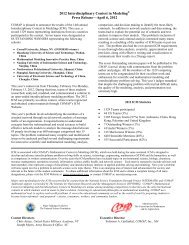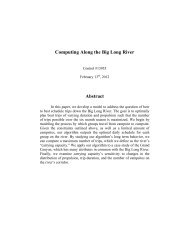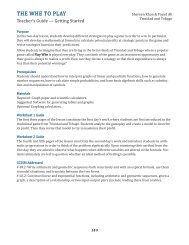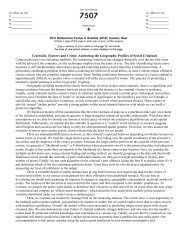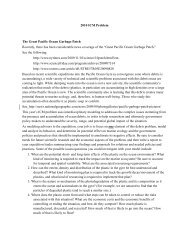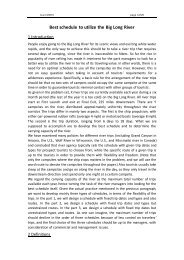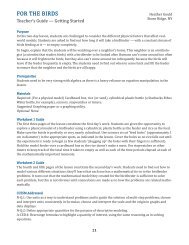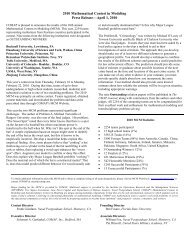Team 9159: Higher in the Air: Design of Snowboard Course
Team 9159: Higher in the Air: Design of Snowboard Course
Team 9159: Higher in the Air: Design of Snowboard Course
You also want an ePaper? Increase the reach of your titles
YUMPU automatically turns print PDFs into web optimized ePapers that Google loves.
<strong>Team</strong> # <strong>9159</strong> page9 <strong>of</strong> 22<br />
Larger E[φ, W ] means more energy before <strong>the</strong> next jump, which is what we are<br />
pursu<strong>in</strong>g.<br />
Eq. (11) provides us a fundamental way to analyze <strong>the</strong> problem. However,<br />
E[φ, W ] is a functional <strong>of</strong> φ(x), conta<strong>in</strong><strong>in</strong>g its zero, first, second derivatives and<br />
<strong>the</strong>ir <strong>in</strong>tegrals, hence a direct variational method can hardly be directly applied to<br />
it. In order to avoid a variational problem <strong>in</strong> <strong>the</strong> function space, we limit some<br />
feature <strong>of</strong> φ(x) and reduce <strong>the</strong> problem to a lower dimensional space.<br />
4 Application <strong>in</strong> 2D Case<br />
4.1 Quarter-Circle Type<br />
From a circle series expansion po<strong>in</strong>t <strong>of</strong> view, we can use a circle to simulate a<br />
curve as <strong>the</strong> first-order approximation. Thus <strong>in</strong> this issue we firstly assume <strong>the</strong> trail<br />
consists <strong>of</strong> a vertical wall, a horizontal path and a quarter circle. This is simple<br />
but can provide us much <strong>in</strong>formation about <strong>the</strong> <strong>in</strong>teractions among <strong>the</strong> relevant<br />
factors. In this case, no energy is added to <strong>the</strong> snowboarder, <strong>the</strong>refore <strong>the</strong> player<br />
may not reach <strong>the</strong> o<strong>the</strong>r edge <strong>of</strong> <strong>the</strong> course. So we only study process <strong>in</strong> (x 0 , w),<br />
where w is <strong>the</strong> midpo<strong>in</strong>t <strong>of</strong> <strong>the</strong> path. Our goal here is to analyze how <strong>the</strong> related<br />
factors, µ, h i , x 0 and w, <strong>in</strong>fluence <strong>the</strong> energy loss.<br />
Notice that on <strong>the</strong> quarter circle, we have<br />
F [φ(x)] =<br />
φ′′ (x)<br />
1 + φ ′ (x) 2 = 1<br />
R − y , (12)<br />
where R is <strong>the</strong> radius. Then accord<strong>in</strong>g to Eq. (11), we have<br />
where<br />
E(w) = e −2µθ(x0) E(x 0 ) − µmg(w − R) − mgR(1 − e −2µθ(x0) )<br />
−<br />
3µmg<br />
1 + 4µ [2µR − (x 2 0 − R + 2µ(R − y 0 ))e −2µθ(x0) ], (13)<br />
θ(x) = − arcs<strong>in</strong>(1 − x ). (14)<br />
R<br />
Eq. (13) is a useful result to analyze <strong>the</strong> effect <strong>of</strong> w, x 0 , h i , and µ. We calculate<br />
<strong>the</strong> energy E(w) for different radius to search for <strong>the</strong> best R, which we denote<br />
as R ∗ . For most parameters, E(R) has a maximum <strong>in</strong>side <strong>the</strong> <strong>in</strong>terval [x 0 , W ],<br />
which is chosen as <strong>the</strong> R ∗ . What we are <strong>in</strong>terested here is <strong>the</strong> relationship between<br />
9







